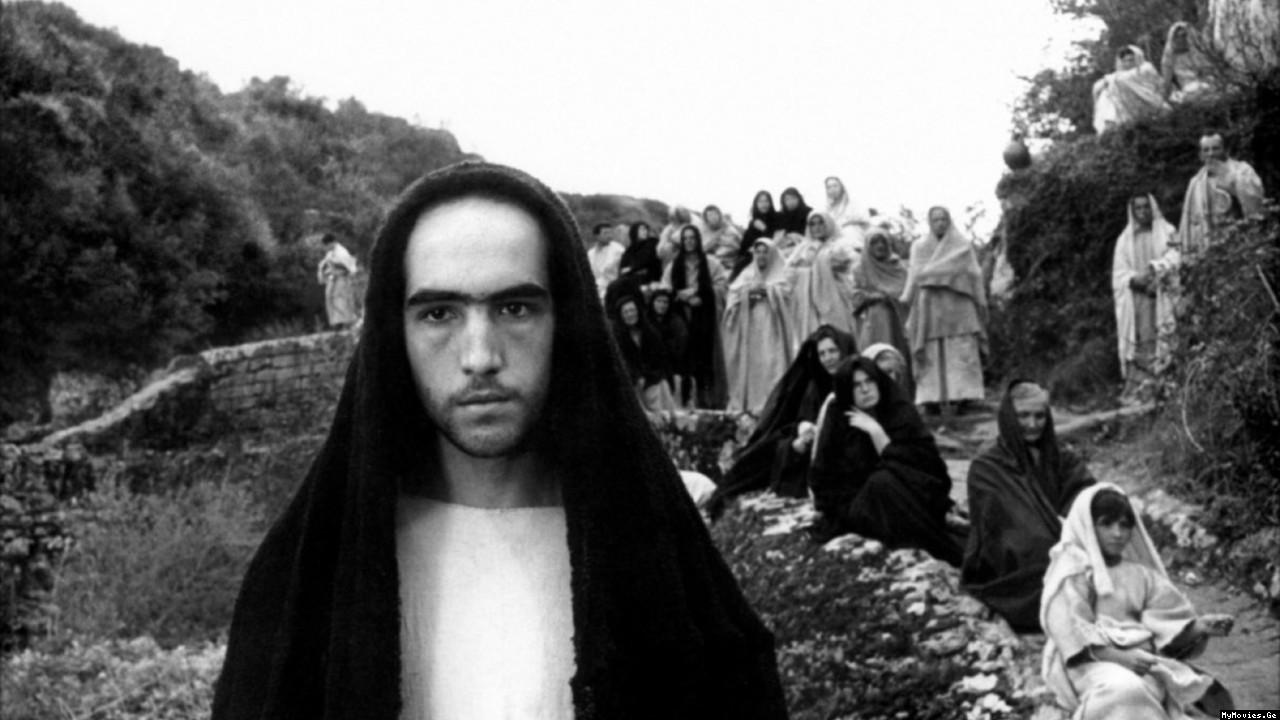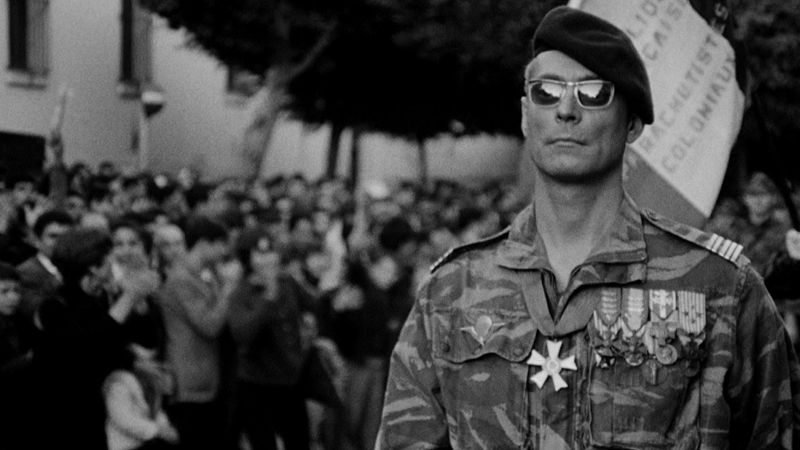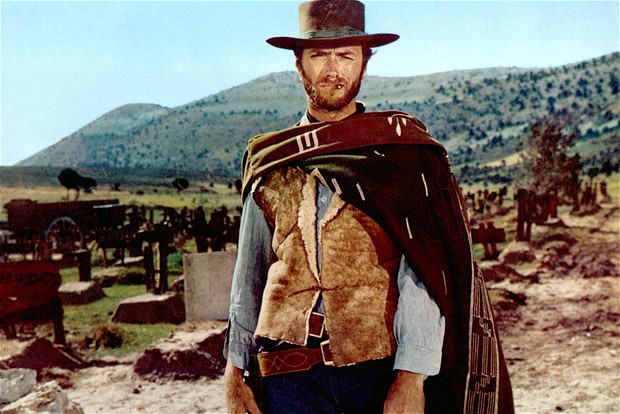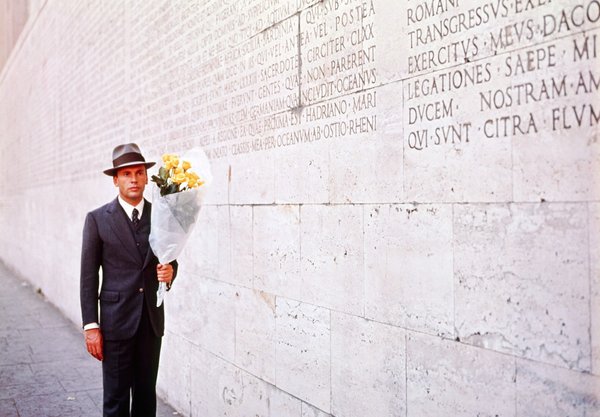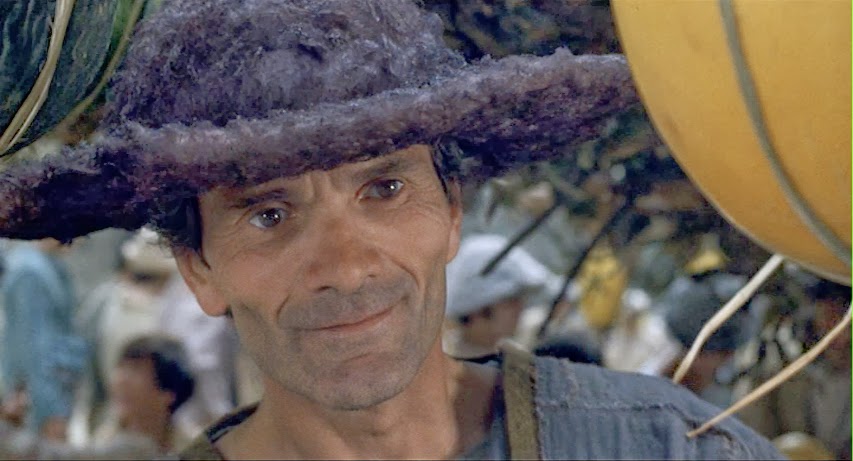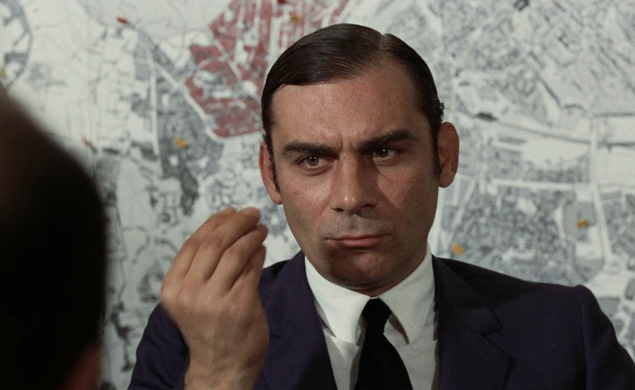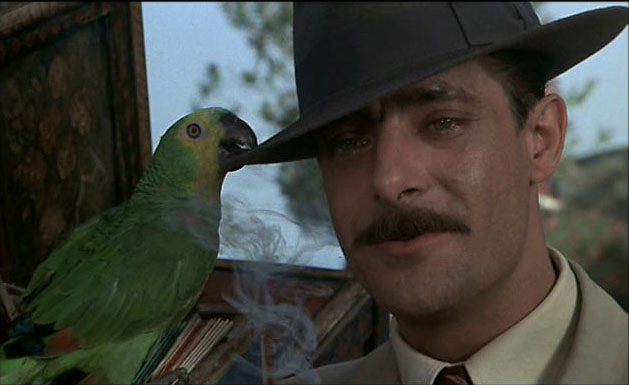16. The Gospel According to St. Matthew (Pier Paolo Pasolini, 1964)
This retelling of the gospel from Pasolini, a noted atheist, is significant due to its extremely minimalist production and film making. Devoid of the typical high costs and effects of most biblical movies, Pasolini’s film manage to convey the pure spirituality of Christ. The story is the basic tale of Jesus from Matthew’s gospel, including many crucial acts like walking on water, turning water to wine and of course the crucifixion. The lack of frills in the production allows the focus to be entirely on the acts and holiness of Christ.
Due to Pasolini being a communist and an atheist, the intentions of this film are far different than many traditional film representations of Jesus. Marxist traits are shown through Jesus as he leads people to their salvation. The miraculous events surrounding him are played down as well, treating them with as much attention as regular part of the gospel.
Pasolini’s direct approach to the story of Christ was quite controversial, with many objecting to an atheist making such an important religious work. Nonetheless, Pasolini understands the importance of the events and through a brilliant minimalist film technique makes The Gospel According to St. Matthew one of the most pure religious films ever made.
17. The Battle of Algiers (Gillo Pontecorvo, 1966)
This critically acclaimed war drama of the Algerian-French war is another later film that was heavily influenced by the Neorealism movement. Adopting the documentary-like style of Rosselini’s World War II films, and similarly showed the tyranny of the oppressive, but it also showed the cruelty that the Algerians were capable of.
The film follows the armed conflicts between the Algerian revolutionary force against the French colonizing forces. Although there are several distinct characters on either side, the film focuses more on the war overall, and specifically the guerilla warfare and brutal methods used by both sides.
The Battle of Algiers was quite controversial when it was released due to its focus on urban uprisings and, although it did not romanticize these rebellions, groups like the IRA were influenced by the radicalism in the film.
The gritty realism in the movie was also so convincing as a documentary that it needed a disclaimer in America to explain that it in fact as fiction. Not only is the film successful as a moving depiction of violence and war, but it is also notable due to its political neutrality, providing an objective glimpse into a violent and controversial conflict.
18. The Good, the Bad and the Ugly (Sergio Leone, 1966)
Sergio Leone’s ending to his highly influential “Dollars” trilogy epitomized everything the spaghetti western could and should be. The film stars the steely Clint Eastwood as the gunslinger Blondie (The Good) and Lee Van Cleef and Eli Wallach as the Bad and the Ugly.
The plot has Eastwood and Wallach working together to find Confederate treasure during the Civil War and halfway through Van Cleef becomes in on the hunt as well. Many bloody and tense battles lead up to the climactic Mexican standoff between the three at the site of the treasure.
Visually stunning with Leone’s trademark juxtaposing of long shots and close ups, the cinematography engages the audience through the film’s lengthy run. It also features a memorable soundtrack from Ennio Morricone, Leone’s frequent collaborator. The success of this film has dramatically increased over time, now considered a masterpiece of Italian and the Western genre.
Its appeal comes from its beautiful imagery combined with a gripping story and intense shootouts, defining and popularizing the spaghetti western genre. The Good, the Bad and the Ugly is one of Leone’s greatest, and certainly his most famous prolific, film that represents an important genre of Italian cinema.
19. The Conformist (Bernardo Bertolucci, 1970)
This visual masterpiece tracks the story of Marcello Clerici, a cowardly man who becomes a Fascist agent and is ordered to kill his old friend and teacher Luca Quadri. Accompanied by his wife Giulia, played by the beautiful Stefania Sandrelli, Marcello tracks down Quadri in 1930s Italy and earns his trust before having him killed. Later, when the Fascists fall, he again switches sides and sells out his former accomplices, showing his conforming nature to survive.
This film’s psychological analysis of Marcello and Fascists in general is much more complex than most historical films. Addressing many aspects of the psyche including motivations, politics and sexuality, Bertolucci creates very intriguing and complex characters though which to explore his themes.
The main triumph of this film, however, is not the themes or storytelling but the intricate production design and impeccable cinematography. Perfectly capturing the appearance of 1930s Italy as well as beautiful, intimate camerawork, The Conformist is one of the most visually stunning films in Italian cinema.
20. Il Decamerone (Pier Paolo Pasolini, 1970)
Based on Boccacio’s book of the same name, Pasolini’s film represents his shift from the realist style into the second half of his film career, focused on the debauchery and depravity of humans. The film is the first in a “Trilogy of Life” which includes two other films also based on anthology-books, The Canterbury Tales and Arabian Nights. As with the others, Il Decamerone features a handful of stories from the source text, tying them together through common themes of gratuitous sex and scatological humor.
Il Decamerone starts a phase of Pasolini’s more elaborate and extensive film making, with large and imaginative scenes and concepts. The increased adult humor and content, however, have made his later films quite controversial.
While this film is not as explicit as some of Pasolini’s others like Arabian Nights or the infamous Salo, it is still a more adult film filled with many disgusting gags. Capturing faithfully the atmosphere and humor of Bocaccio’s book, Il Decamerone is an entertaining comic film, representing Italian cinema’s venture into gross-out, explicit content.
21. Investigation of a Citizen Under Suspicion (Elio Petri, 1970)
Underrated Italian director Elio Petri’s masterpiece acts as both an exciting crime thriller and a satirical dark comedy about the corruption of the Italian government. Featuring Gian Maria Volonte in a career high role as the police inspector who murders his girlfriend and is put in charge of the case. He plants many clues that point to him as the killer in order to test the system, but the other police officers simply ignore them.
When he becomes so desperate to become discovered and admits his crime, his superiors once again ignore him and pretend that it did not happen.
The mix of satire and thrills creates a thoroughly entertaining and funny film experience, branching Italian cinema outwards from the seriousness of the previous decade. A delightfully silly and strange score by Ennio Morricone helps to blend the two seemingly differing genres into one, highly creative and original film. Transcending typical film genres and outlines, this multi-layered film with a jumbled timeline is one of the most quirky and unique Italian films of the 1970s.
22. A Lizard in a Woman’s Skin (Lucio Fulci, 1971)
Lucio Fulci, auteur and innovator of the Giallo movement, broke boundaries with this landmark and highly controversial display of sex and violence. The film is a psychedelic murder thriller focusing on a woman named Carol who is haunted by her dreams.
After she dreams of the murder of her wild neighbor Julia, she becomes the prime suspect when Julia is actually murdered in the way she predicted. She tries to clear her name with the help of an investigator but is continually tormented by her psyche and two mysterious hippies who she saw in her dream and so she continuously struggles towards her salvation.
Featuring a myriad of culturally revolutionary themes and imagery, A Lizard in a Woman’s Skin was as influential as it was controversial. This content including heavy drug use, lesbian sex scenes and bloody, graphic violence represented the change in the generational culture as well as the changing environment and boundaries of film.
In fact, many were so upset over a certain scene involving prop dogs that the effects team had to testify in court in order to clear Fulci of animal abuse. A thrilling and titillating product of peak of the drug and free love era, A Lizard in a Woman’s Skin is a unique and unforgettable entry in the legendary Giallo genre.
23. Seven Beauties (Lina Wertmuller, 1975)
Lina Wertmuller was an early great female director and, with this film, was the first woman to be nominated for a directing Academy Award. Seven Beauties is one of her greatest films, combining both moments of hilarious dark humor and serious and devastating events.
Italian star Giancarlo Gianini plays Pasqualino, a proud and spontaneous citizen, brother to seven sisters, who goes to jail after protecting his family’s honor by killing a man. He escapes his punishment by volunteering for the army during WWII but ends up in a Nazi camp. In the camp he manages to rise in the ranks and survive by seducing the camp’s repulsive commander.
Unlike typical Holocaust films, Wertmuller’s stands out due to the character of Pasqualino and his motives as an individual. Gianini brilliantly plays the character as a bottom feeder of society, doing anything he can in order to survive, even if it means the failure or even death of his friends and family.
Besides a bizarrely flawed sense of honor, Pasqualino is an unprincipled, selfish person making the film a confusing viewing experience as there is no noble protagonist to root for. The mixing of comedy and such important events is also a notable feature of the film. Seven Beauties is a unique and fascinating Holocaust film from one of Italy’s greatest and overlooked directors.
